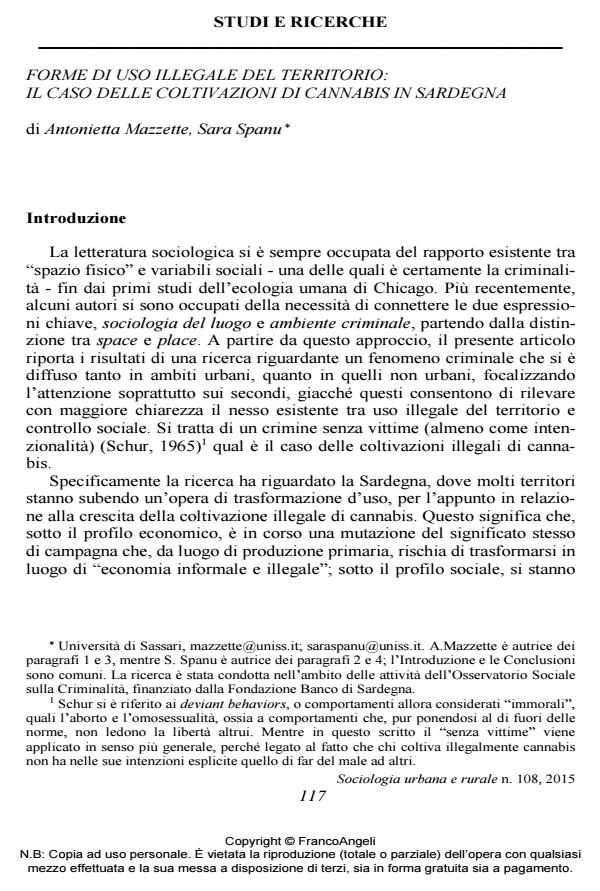Forms of illegal Use of Land: The Cultivation of Cannabis in Sardinia
Journal title SOCIOLOGIA URBANA E RURALE
Author/s Antonietta Mazzette, Sara Spanu
Publishing Year 2016 Issue 2015/108
Language Italian Pages 19 P. 117-135 File size 129 KB
DOI 10.3280/SUR2015-108008
DOI is like a bar code for intellectual property: to have more infomation
click here
Below, you can see the article first page
If you want to buy this article in PDF format, you can do it, following the instructions to buy download credits

FrancoAngeli is member of Publishers International Linking Association, Inc (PILA), a not-for-profit association which run the CrossRef service enabling links to and from online scholarly content.
The paper presents some findings of a wider research on the transformation of crime in Sardinia and it considers the cultivation of cannabis from a sociological standpoint. The aim is to reflect on the illegal use of vast rural areas, through the theoretical approaches of sociology of territory, both as regards the shift of increasing areas into places of informal and illegal economy, and as regards the transformation of individual and group behaviors related to this illegal practice.
Keywords: Cannabis, Territory, Crime, Sardinia, Illegal Use, Social Control.
Antonietta Mazzette, Sara Spanu, Forme di uso illegale del territorio: il caso delle coltivazioni di cannabis in Sardegna in "SOCIOLOGIA URBANA E RURALE" 108/2015, pp 117-135, DOI: 10.3280/SUR2015-108008